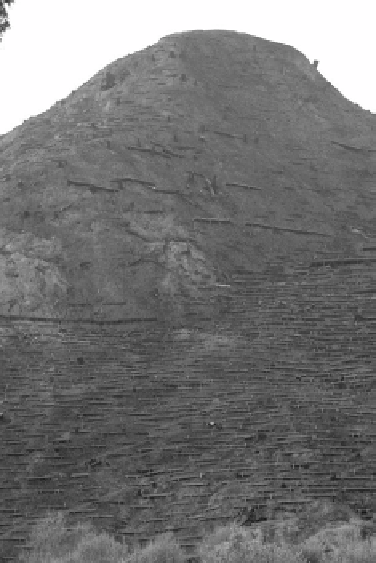Agriculture Reference
In-Depth Information
Fig. 13.7
Postfire slope stabilization by felling and placing
in situ
tree skeletons from 2007
fire on Mt. Olympus, Greece. (Photo by Jon Keeley.)
seeding. In general, where dominated by resprouting shrubs or having a native
postfire herbaceous flora, this native regeneration may be much greater than the
seeded cover (Keeley
1996
; Beyers
2004
;Vallejo
et al.
2006
). An important consider-
ation is that often there are better methods than seeding for reducing slope erosion,
such as log barriers (
Fig. 13.7
), mulch or hay bales, which have proven to be more
effective and far more predictable than seeding (Robichaud
et al.
2000
).
In terms of conserving naturally functioning chaparral ecosystems, seeding also
has the potential for negative impacts. Where non-native species are seeded and
the rains co-operate to establish these species, they have the potential for outcom-
peting the native species and altering the natural ecological balance. On some
landscapes the short-lived non-native seeded grasses dry earlier than native species
and increase the length of the fire season, promoting repeat fires (Zedler
et al.
1983
). In addition, seeded species sometimes escape and become aggressive inva-
sives, such as black mustard (
Brassica nigra
), which was the favored exotic species
used to seed after fires in southern California during the first half of the twentieth
century. Today this invasive is a widespread pest throughout the region (e.g. see
Fig. B12.2.1).
One approach that has been used is aerial seeding of “sterile” cereal crop seeds,
which pose no threat of escape and invasion. However, this practice still has

